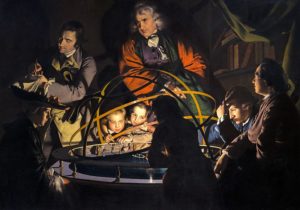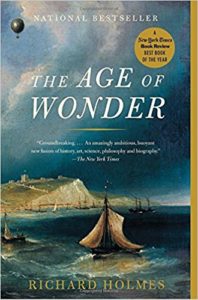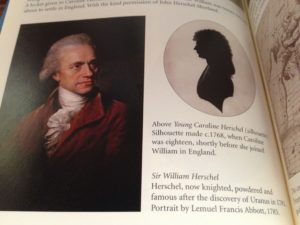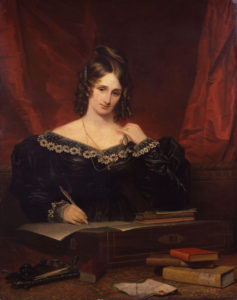
All children are natural scientists and artists. They want to explore. They find out why things are the way they are, why things work the way they do. Every child goes through this why stage. I remember a glass of water cutting the sunlight into a rainbow across the kitchen table. I stared at it. My father explained to me that the light we see contains all those colors, but they get hidden when they blend. I looked out into the garden with a sense of wonder, realizing that there was a whole hidden dimension out there, and now I knew about it. It is this sense of awe in penetrating nature’s mysteries that is explored in “The Age of Wonder” by Richard Holmes.

He follows a two-hundred-year thread of reasoning, hard work and discovery that led us out of a thousand years darkness and superstition and into the amazing and terrifying world we see today. It was a fun time to study science. We were still dealing with basics, and the basics were accessible to a curious person who worked really hard. Physicians, clergymen, naturalists and artists could unlock a deeper nature then the one we see before us. A diligent scholar could master all the scientific fields together if he so desired. Scientists and artists are very much the same. They are both careful observers of the world around them. They think for themselves. The scientist will try to figure out how the world works, and the artist will reflect that world into some new reality that will be beautiful or useful or interesting or if you are lucky, all three. The musician /scientist who changed our view of the entire universe was William Hershel who moved to England from Germany in 1766, followed by his sister Caroline a few years later.

England was the happening place back then and if you wanted to make something of yourself, that’s where you went. One of the things that astounds is how hard they both worked. Caroline rose at six, did “household accounts, shopping, laundry, three-hourly singing lessons, instruction in English and arithmetic, music copying, formal practice on the harpsichord, and reading out loud from English novels. By ‘way of relaxation’ she and William talked of nothing but Astronomy.” She became a successful singer, appearing as a principle solo singer in Handel’s Messiah. He made a living composing music, putting on musical performances and tutoring musicians. In his spare time (hard to believe they had any) he was an amateur astronomer. Amateur has the same root as amorous, you do it because you love it. That childlike curiosity never went away for William Hershel. Astronomy is limited to how much you can see, and that is limited to the size of your telescope. Owls have such big eyes because they have the same problem as astronomers, they need to see in the dark. The telescopes of the time were limited to the size of a reflecting mirror that you could grind, about four inches. Hershel wanted bigger eyes so with Caroline’s help he started grinding his own mirrors. It was arduous, dangerous work, done in the cellar. Polishing the mirrors could not be stopped once begun or the mirror would be ruined. During one marathon session, he went for sixteen hours straight with Caroline feeding him as he worked. They persevered and were rewarded. With his new telescope, he could see father out into the heavens than anyone else. He reported his findings to the Royal Society and they didn’t believe that an amateur could do that much. But the President of the society, Sir Joseph Banks, paid him a visit just to be sure.

Sir Joseph Banks was also consumed by curiosity. He was born rich and could have lived a life of ease. Instead he wrangled a position on HM Bark Endeavor bound for Tahiti under the command of Captain Cook. This was a wildly dangerous thing to do. A lot of those ships never came back. The Endeavor lost half her crew, mostly to disease. While Cook surveyed Tahiti, Banks did the first field anthropology ever, studying the indigenous peoples, all before the age of 30.
This was the man who rode out to see Hershel, only to find him out on the street in front of his house with the telescope. Banks knew enough about telescopes to be amazed when he looked through Hershel’s. The two men talked about the stars all night. At this point the story takes on an almost fairy tale quality. Since Britain was a naval power, celestial navigation was of the greatest importance. Whole fleets with thousands of men had been lost over the years due to navigational errors. Better telescopes meant better star charts meant better navigation. Sir Joseph went to King George and basically told him they had to find a way to keep Hershel in England. George pulled a new job out of the air – Royal Telescope Maker. Now Hershel didn’t have to struggle along, tutoring music students. From then on, he poured his prodigious energy into making bigger and bigger telescopes until he made one forty feet long.

It was so big, aiming it was a problem. Better to leave it and let the earth’s motion point it at a slice of the sky. Every day it would point to a slightly different slice. But how to keep it all straight? He took the latitude and longitude of the earth and projected it into the sky. This declination and right ascension is the same system we use today. He couldn’t watch through the telescope and write down the observations and coordinates at the same time. You need light to write and light will weaken your night vision. Caroline to the rescue.
Caroline was a first-class mathematician. Caroline and William formed the first astronomical team in history, with him making the observations and her writing it all down and figuring out the exact location, which turned out to be critical. They mapped the sky, night after night, month after month, year after year until they had compiled a star atlas of unprecedented accuracy. Over the march of years, they discovered that positions of the stars were off by just a little bit from their original survey. They never would have noticed except for the care of the first set of observations. Not only had the stars moved, they moved in different directions and at different speeds. Hershel started to refer to the stars having “proper motion.” The apparent motion is slight because of the truly astronomical distances involved.
It didn’t matter. They weren’t supposed to be moving at all. For all of time people thought of the fixed stars as something eternal, because in the short span of our lives no one would notice. If you could live a few million years, all the constellations would fall out of joint, and new ones would appear. Hershel wrote to the Royal Society (who were believing him now) that since the stars moved, it implied that the universe wasn’t constant, it was changing. That implies a beginning. That implies an end.
As William’s official assistant, Caroline was the first woman in England to have a salaried, government job. Among her discoveries were a companion galaxy to Andromeda and at least eight comets. After William died she continued their work, compiling a catalog of two and a half thousand nebulae and star clusters. This eventually grew into the New General Catalog. In 1828 she was awarded the Royal Astronomical Society’s Gold Medal for her work.
While the Hershel’s were looking up, others were looking down.

This is one of the first aerial maps. Through the clouds, you see a winding river (in red) and a village on the lower left. The adventurous and extremely dangerous first flights were under way. Everywhere in science, new inventions were allowing us to see further, better and with new perspectives. Even so, our imagination went further. Mary Shelley invented the science fiction and the Gothic horror genres at the same time with her masterpiece, “Frankenstein.” With preternatural prescience, she foresaw the dark side of man’s ambition and resourcefulness, creating things that he cannot control and all the destruction that follows. Would that she had been wrong.

These stories, and many more, fill the pages of “The Age of Wonder. ” Compliment it with “Fossils”, or maybe just lie down and look up at the changing universe.
In broadening our understanding of reality, science will often show us things that we don’t like. Many people found the idea of a steady, eternal, unchanging universe to be comforting. After all, to us that is what is seems to be with our limited perspective. So, there was resistance to the idea that the universe is changing just like there was resistance to the earth being round. Now there is resistance to evolution and global warming. People don’t like change, and they don’t like to change their minds. It would be helpful if we could reconnect with a little humor about it instead of hurling invective. There are over three hundred thousand species of beetles on earth. It is a very successful design. In response to theological question, “What has your study of creation told you about the Creator?”, the biologist J.B.S. Haldane responded, “The Creator, if He exists, has an inordinate fondness for beetles.”
